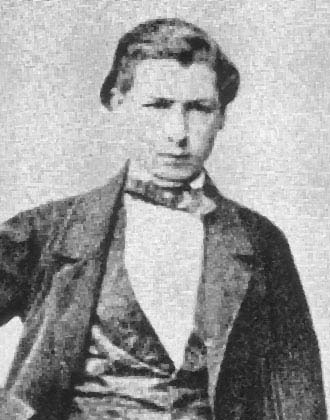
Ernst Leitz I (1843-1920)
When Leitz joined Carl Kellner’s Optical Institute in Wetzlar 1864, he was an instrument maker trained in making physical and chemical apparatus, and also had several years experience making Swiss watches. After Kellner’s death in 1855, Leitz became the main shareholder in the company. By 1869, he owned it outright and continued in business under his own name. He introduced serial production and sales increased rapidly after 1871. They sold their 10,000 microscope in 1887, and in 1907, Robert Koch took delivery of the 100,000th. Paul Erlich received the 150,000th.
The First World War had severe economic consequences for the company. Ernst Leitz I died in 1920, and the company passed to his 2nd son, Ernst Leitz II.
Ernst Leitz II (1871-1956)
Leitz II revolutionised photography by expanding the company’s product range to include portable cameras under the name Leica (an abbreviation of Lei(tz) ca(mera)). He launched the Leica 0, a combination of designs by 2 of his employees, in 1925. Oskar Barnack designed a camera that used 35mm film and Max Berek was responsible for the lenses.
The company also produced other instruments in the 1920s and 1930s, including polarising and fluorescent microscopes.
In recent years, it has become known that during World War II, Leitz helped some of his Jewish employees reached the USA and protected others. Many of his employees were Ukrainian complex forced by the Nazi regime were treated well by Leitz and his daughter (for which she was sent to a prison camp), and it is also claimed that he saved over 1000 Polish Jews by employing them in his enamel factory in Kraków. He resisted all efforts to publicise its activities after the war.
When he died, control of the company passed to his sons Ernst Leitz III, Ludwig and Gunther.
Compound achromatic microscope, stand I
LEITZ
1886-1887
Compound achromatic microscope, stand IA
LEITZ
1886-1887
Compound achromatic microscope, ‘stand V’
LEITZ
1888
Dissecting microscope with achromatic magnifier after Steinheil
LEITZ
1900-1930
Compound achromatic microscope, stand IA
LEITZ
1902
Compound achromatic microscope, stand V
LEITZ
1904
Compound achromatic microscope, stand IIb
LEITZ
1908-1909
Compound achromatic microscope, stand IIb
LEITZ
1909
Compound achromatic microscope, stand III
LEITZ
1909
Compound achromatic microscope, stand C
LEITZ
ca. 1917
Compound achromatic microscope with binocular tube
LEITZ
1929
Compound achromatic microscope
LEITZ
ca. 1934
Compound achromatic polarisation microscope, stand III M
LEITZ
1936-1937
Compound achromatic microscope, stand ‘Laborlux’
LEITZ
1951-1952
Compound achromatic microscope, stand ‘SM’
LEITZ
1955-1957
Compound achromatic polarisation microscope, stand BS
LEITZ
1956
Compound achromatic microscope, stand Ortholux
LEITZ
1959-1960
Compound achromatic projection microscope
LEITZ
1960-1970
Compound achromatic projection microscope
LEITZ
1960-1980
Compound achromatic microscope, binocular tube, type SM-D Lux
LEITZ
ca. 1970
Compound achromatic microscope, stand ‘Orthoplan’
LEITZ
1970-1971
Compound achromatic microscope, stand ‘Orthoplan’
LEITZ
1980-1982
Microtome after Minot
LEITZ
1890-1930
Swinging microtome
LEITZ
1910-1940
Microscope lamp, type ‘Beech’
LEITZ
1930-1950
Microscope lamp, type ‘Beech’
LEITZ
ca. 1935
Four separate eyepieces
LEITZ
1930-1990
Achromatic stand magnifier
LEITZ
1925-1950